
by Spreck | Dec 26, 2023 | Uncategorized

Thanks to all our supporters, 2023 has been a productive year for our collective campaign to restore a long-lost public treasure.

Photo: Matt Ashby Wolfskill
2023 has indeed been a wonderfully wet year. The extended snowmelt fueled Yosemite’s famous waterfalls and brought huge crowds to Yosemite. Many visitors, wanting to avoid congestion, opted to wander through the Hetch Hetchy entrance for the first time. Many of these people will learn why there is a reservoir in a national park, that there is a campaign to relocate the reservoir outside of Yosemite and ultimately support that campaign.
We are pleased Restore Hetch Hetchy has been able to encourage the National Park Service to extend the hours that Hetch Hetchy has been open to the public. The NPS also is planning to improve the campground, repair the boat ramp and provide visitors better information about the area’s human and natural history.
We will soon meet with the National Park Service and will ask them to respond to the legal petition we submitted in September. If they agree with our assertions that camping, boating etc. must be allowed, what will they do to comply? If they do not agree, why not?
There was another positive outcome from this past extraordinarily wet year. Local and national media covered the need and opportunity to recharge groundwater basins as never before. Governor Newsom eased regulations and repeatedly asked the Department of Water Resources if “we” were doing all we could. In San Francisco’s case the answer is no. The City and irrigation districts in the Tuolumne watershed could do far more to capture flows in very wet years like 2023 (and 2019, 2017, 2011, 2006, 2005 etc.). We and others, however, have successfully encouraged the San Francisco Public Utilities Commission to pursue cost-effective recharge programs that would improve supply and help obviate the need for a reservoir in Yosemite National Park.
It’s with your support that we are able to create change. If you’d like to make a contribution to Restore Hetch Hetchy, you can do so online or by mail to the address below:
Restore Hetch Hetchy
3286 Adeline Street
Suite #8
Berkeley, CA 94703
Tax identification number: # 77-0551533

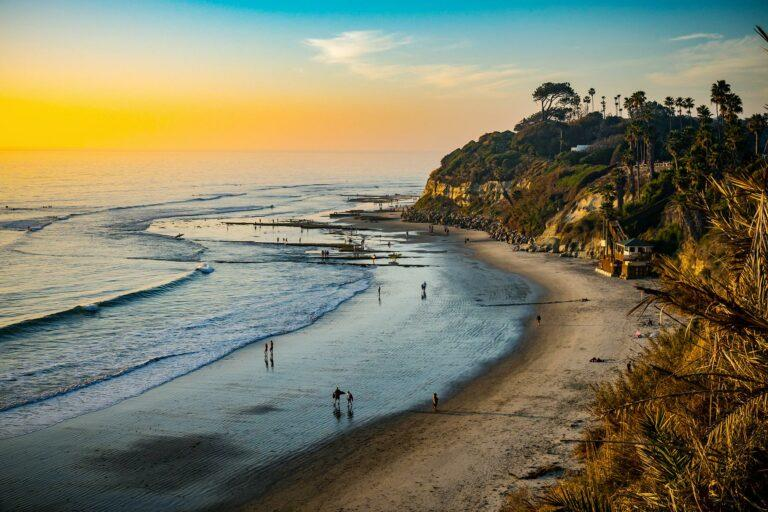
by Spreck | Dec 21, 2023 | Uncategorized
On Wednesday, California’s State Water Resources Control Board formally adopted criteria for recycling wastewater.
The Water Board’s rules are a big deal, a very big deal, and they provide California’s cities a clear and definite alternative for assuring a reliable water supply. But the action has been expected for some time – after all, communities in southern California have already committed billions of dollars and have begun constructing recycling projects.

San Diego’s “PureWater” recycling program will provide additional supplies AND help clean up its beloved beaches.
Recycling wastewater is not entirely new. Singapore has been recycling wastewater for more than 20 years, a technology its Prime Minister promoted by drinking “NEWater” on television. And Orange County has been recycling wastewater for decades as well, although those supplies have been injected in aquifers before being extracted and treated for use.
The Water Board’s new rules allow wastewater to be treated and stored in local surface reservoirs or delivered directly to customers. Any skeptics might want to visit a recycling plant to see the extensive process, which includes that same nanofilters used for desalination. (Pushing recycled water through the nanofilters requires a fraction of the energy that desalinating seawater requires.)
Recycling is expensive indeed. In some cases (e.g. San Diego), however, the cost of recycling is a large part of the cost of reducing pollution of its beaches from wastewater plants. Obviously recycling wastewater would reduce pollution in San Francisco Bay as well as enable restoration of Hetch Hetchy Valley in Yosemite National Park – something we argued in an editorial opinion in the San Francisco Chronicle last year after a toxic algae bloom killed tens of thousands of fish.
Restore Hetch Hetchy believes San Francisco needs to modernize its water system so that Yosemite National Park can again be made whole. We’ve emphasized groundwater banking as a lower cost alternative than recycling (or expanding Calaveras Reservoir) – but recycling wastewater would indeed provide a huge water quality benefit to the Bay.

Hetch Hetchy Valley – no place for a reservoir!
As we explain in Yosemite’s Opportunity: Options For Replacing Hetch Hetchy Reservoir (2022): “The recent investments that California’s cities have made in groundwater, recycling and local surface storage would replace Hetch Hetchy Reservoir more than 15 times over. The San Francisco Public Utilities Commission has the opportunity to pursue any or all of these technologies.” Not a drop of supply need be lost!

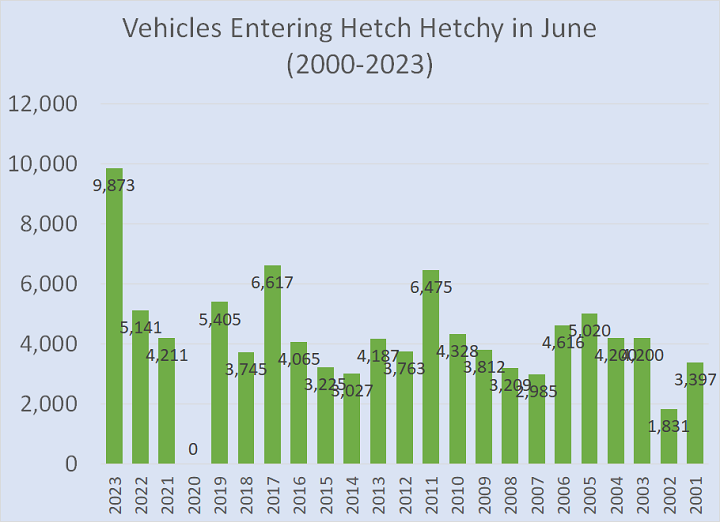
by Spreck | Dec 16, 2023 | Uncategorized
After record crowds and some very long lines in 2023, the National Park Service is implementing a reservations system again in 2024.

Visitation to Hetch Hetchy, like all of Yosemite, is increasing – especially in late spring when the waterfalls are booming.
These requirements, however, include some nuance – see summary below or the NPS website for more detail.
Many people will be able to plan their trips to Yosemite by making a reservation or by avoiding weekends and the peak summer season. Visitors with reservations to camp or stay in lodging will be permitted to enter the park as well.
It will not be possible, however, to wake up on a gorgeous Saturday and decide on the spur of the moment to go to Yosemite Valley.
The reservations system does not apply to the Hetch Hetchy entrance, where visitor use in 2023 reached the highest level in more than 30 years. Restore Hetch Hetchy welcomes visitors and is actively encouraging the National Park Service to improve the experience of those who come to Hetch Hetchy by allowing camping, creating additional trails and allowing nonpolluting boating. We are grateful that the NPS has extended the hours when the Hetch Hetchy area is open but still believe those hours should be extended further.
Since parking at Hetch Hetchy is limited, we believe public transportation should be available as it is for Yosemite’s other four entrances.
We don’t want Hetch Hetchy to be overrun, of course. But we do believe it is necessary for more people to experience Hetch Hetchy’s extraordinary landscape as we build support for relocating the reservoir and returning the valley to its natural splendor.

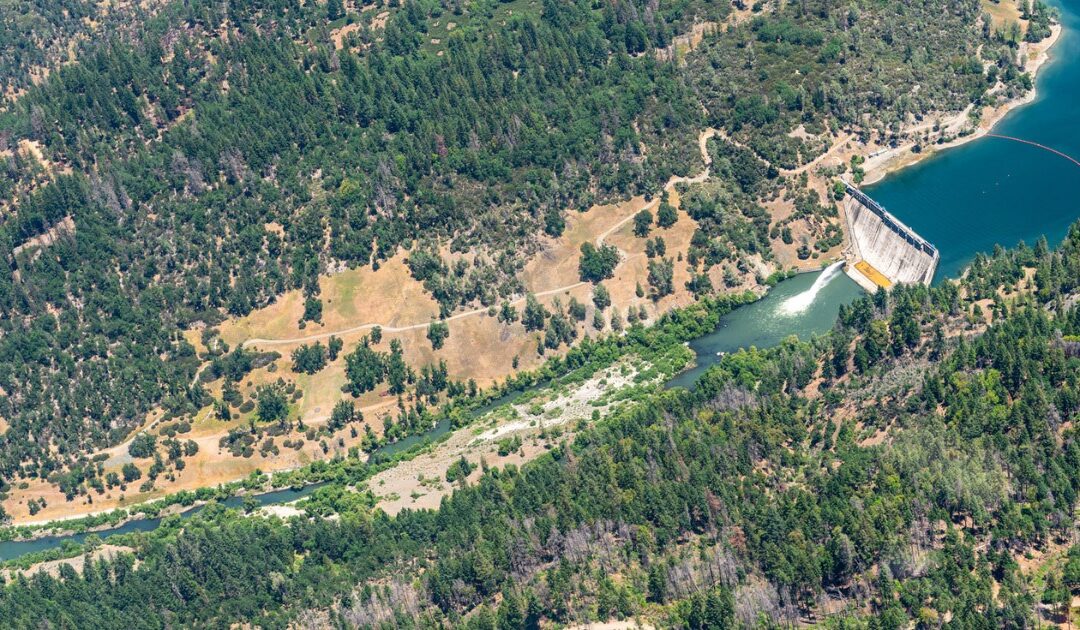
by Spreck | Dec 9, 2023 | Uncategorized
After years of discussion and debate, dam removal on the Eel River appears to be moving forward.
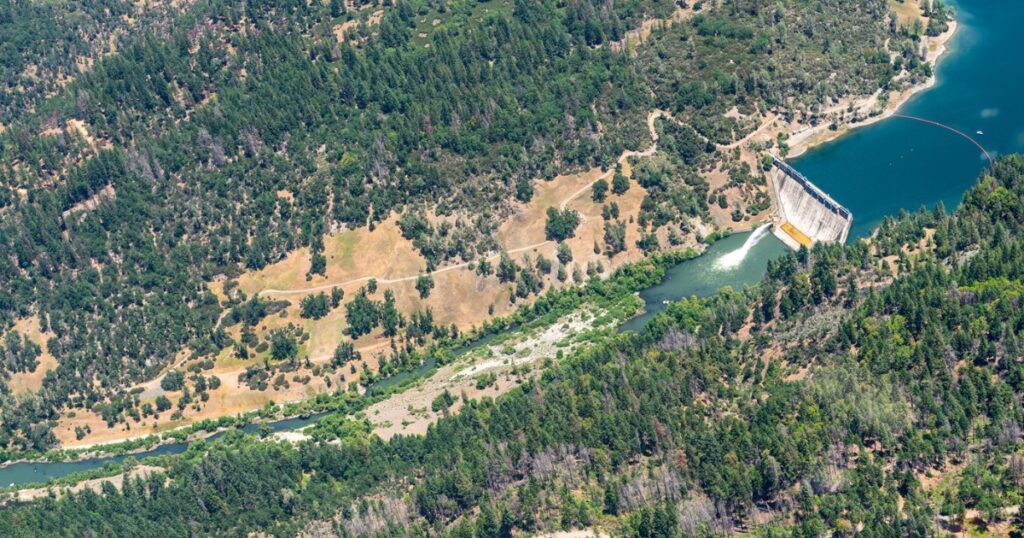
Scott Dam, Lake Pillsbury and the upper Main Eel River. Photo: CalTrout
The dams in question are the Scott Dam, which forms Lake Pillsbury, and the Cape Horn Dam downstream, where diversions from the Eel River to Sonoma County have taken place for decades. Some diversions will still be allowed, but they’ll have to take place in winter when there is natural flow in the Eel River as summertime releases from Lake Pillsbury will not be possible.
Some wintertime diversions may be diverted to Lake Mendocino or used to recharge groundwater, but the Sonoma County Water Agency and farmers in the Potter Valley will need to take other measures to make up for a reduction in use of the Eel’s flow. Impressively, the Sonoma County Water Agency appears wholly cooperative and prepared to embrace the challenge.
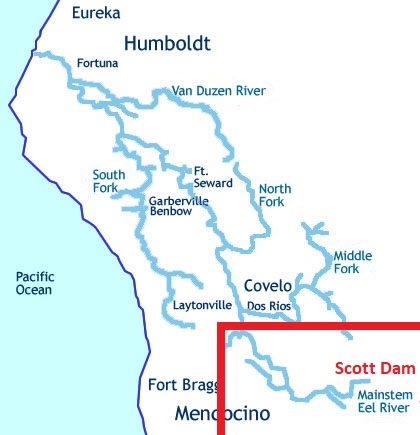
The Eel River and its many forks flow northward through Mendocino and Humboldt Counties.
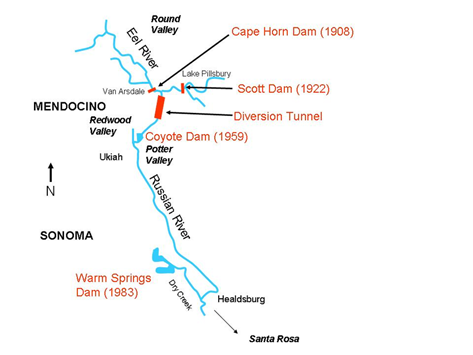
Scott and Cape Van Horn, the only dams on the river, no longer produce hydropower but do provide water supply to Potter Valley farmers and the Sonoma County Water Agency.
The purpose of removing the Eel’s dams is the same as removing dams further north on the Klamath River – to help revive salmon and steelhead populations. While the Eel’s removals principally affect water supply, the Klamath’s removals affect hydropower production.
Restoring Hetch Hetchy Valley in Yosemite National Park will affect both water supply and hydropower. As we laid out in Yosemite’s Opportunity: Options For Replacing Hetch Hetchy Reservoir, San Francisco can assure itself no loss of water supply (or even increase it), by investing in groundwater recharge, wastewater recycling or enlarging Calaveras Reservoir.
We have estimated that San Francisco will lose about 350 gigawatt-hours a year when Hetch Hetchy is restored – or about one half of the hydropower lost when the Klamath Dams are removed. (For readers who don’t think about gigawatt hours on a daily basis, if everybody in the United States used a toaster over for one hour, the total power consumption would be about 350 gigawatt-hours.)
It is refreshing to see the general consensus that the environmental benefits of dam removals on both the Klamath and Eel outweigh the costs of replacing water and power supplies. We think the same is true at Hetch Hetchy. To date, the San Francisco Public Utilities Commission shows no inclination that it will cooperate with restoration of Hetch Hetchy as the Sonoma County Water Agency has on the Eel.
We look forward to the day when San Francisco, willingly or not, embraces the water and power alternatives that will make it possible to restore Hetch Hetchy to its natural splendor.
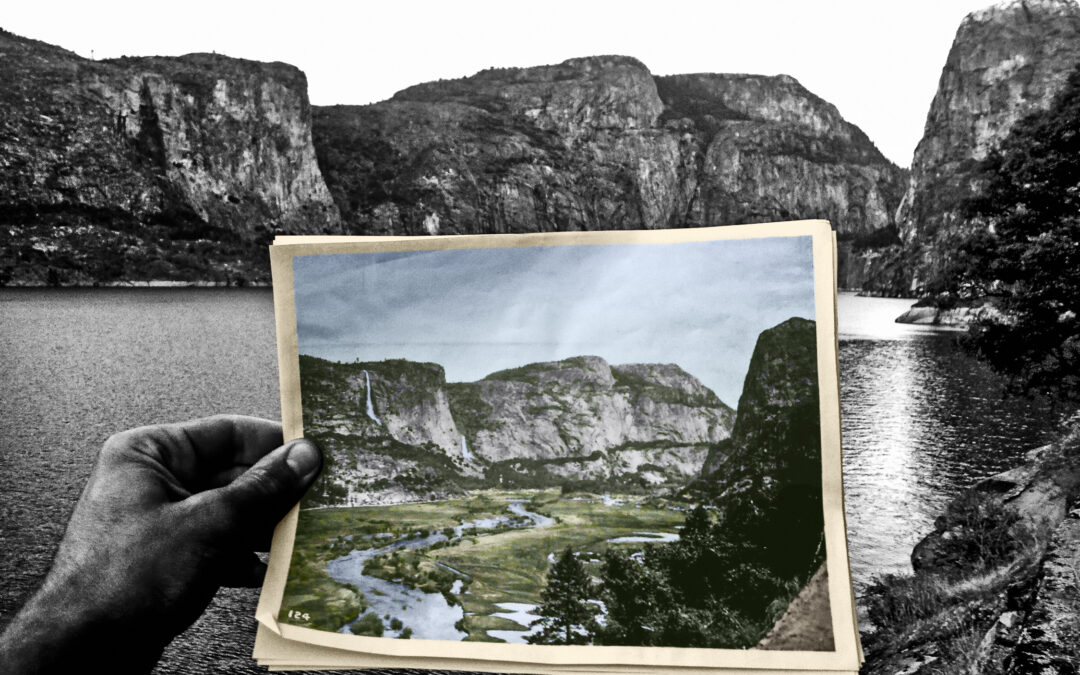
by Spreck | Nov 27, 2023 | Uncategorized
In recognition of Giving Tuesday, contributions made to Restore Hetch Hetchy this week will be doubled – up to a total of $15,000.
Tax-deductible contributions can be made online or by U.S. mail (Restore Hetch Hetchy, 3286 Adeline St. Suite 7, Berkeley, California 94703).
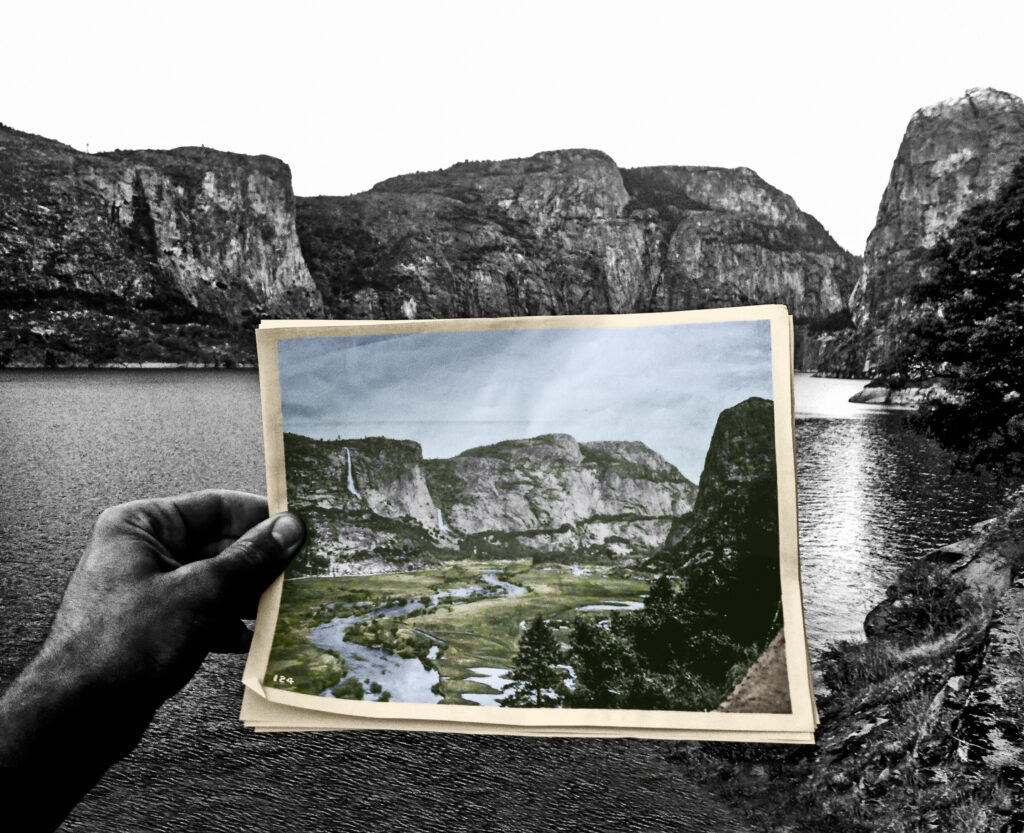
The vision of Restore Hetch Hetchy is to return to the people Yosemite Valley’s lost twin, Hetch Hetchy – a majestic glacier-carved valley with towering cliffs and waterfalls, an untamed place where river and wildlife run free, a new kind of national park. (Photo: Matt Stoecker)
2024 will be an exciting year. We are looking forward to our continued work with the National Park Service to improve access at Hetch Hetchy and with the San Francisco Public Utilities Commission and other water agencies to develop alternative supplies.
We will also be continuing our outreach to recreation groups, so they will understand what is possible and support our campaign. Returning Hetch Hetchy to its natural splendor will provide an alternative to the often overcrowded Yosemite Valley and inspire a whole new generation of nature lovers.
Restore Hetch Hetchy is encouraged by other dam removal efforts in California. In 2024, 4 dams on the Klamath will finally be fully removed. Also, removal of the Scott and Cape Horn dams on the Eel river appears imminent – more on this soon. (A reminder that Restore Hetch Hetchy is not anti-dam. Most dams serve useful purposes and are necessary. But some are harmful and whatever benefits they provide can and should be replaced by other means.)
Restore Hetch Hetchy is grateful to all who share our vision. We wish you a happy holiday season and a good new year.












